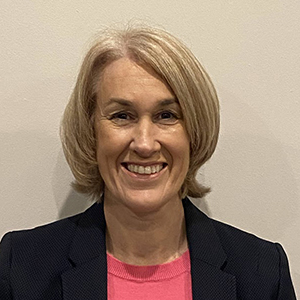What is the future of assessment and feedback?

Universities tell us that changing assessment practice has become a key priority. So, what could the future of assessment and feedback look like?

The digital transformation that has occurred across the education sector over the last two years - whether as an acceleration of a planned strategy or an emergency response – has changed the priorities for higher education.
Valuable lessons have been learned about equity, learning design and interoperability. We have seen success stories and consistently high levels of student attainment. Indeed, the move away from traditional unseen exams to other forms of assessment has seen many students, particularly those from disadvantaged backgrounds, perform better.
Universities tell us that changing assessment practice has become a key priority. So, what could the future of assessment and feedback look like?
Why are conditions right for change?
The pandemic may have focused minds on digital transformation, but there are other reasons why now is the ideal time to review assessment and feedback practice.
The thinking on why some of the known good practice works has advanced. We now have tools that can work seamlessly together and support good pedagogic practice at scale. Students and teachers have been exposed to different ways of doing things and are better able to contribute to dialogue about what works and what doesn’t.
The future of assessment and feedback looks promising. But key to this is shaping a future where practices are accessible, inclusive and compassionate of student needs and experiences.
Are we solving the right problems?
The sector needs to question not only how things are done, but whether it is doing the right things. Based on the range of experience at Jisc and member organisations we need to decide when to digitise existing practice and when to change it.
we need to decide when to digitise existing practice and when to change it.
Digital examinations provide a good example. While there is a lot of expertise to draw on when implementing digital exams, we still need to recognise that, in some cases, student learning is better served by changing the assessment format to a method that promotes more active learning.
Student cheating is another case in point. It is often assumed that it is easier to cheat in the digital world – but this fails to address the more fundamental questions around why students cheat in the first place. Some simple changes may make a big difference. Avoiding assessment bunching that can cause students to panic, for example, and designing assessments that don’t readily lend themselves to tailor-made answers would go a long way to addressing the issue.
Moving towards assessment as learning
Assessment and feedback practice has for some time been moving away from a basic assessment of what has been learned towards assessment for learning. The focus is no longer simply on formal qualifications but on creating an active learning experience with authentic assessments that develop students’ personal agency and judgement.
Key to this is helping students monitor and regulate their own learning and ensuring that any feedback activity encourages future improvement. The very act of undertaking assessment and feedback activities thus becomes an essential part of the learning process.
Key to this is helping students monitor and regulate their own learning
Good practice principles
Jisc recently conducted a survey of 46 UK higher education institutions on their assessment and feedback practices, which highlighted key pedagogic challenges in supporting staff to rethink assessment practice.
To help staff address changing needs, Jisc has identified seven principles of good learning and teaching practice. Based on a sound body of evidence of good pedagogic practice from across the UK and internationally, these principles are generic and can be applied to all aspects of learning design and teaching in all sectors of education. They offer an actionable way to improve learning, teaching and assessment, underpinned by the effective application of technology.
These seven principles are:
- Help learners understand what they are aiming for by engaging them with the requirements and performance criteria for each task
- Support learners’ personalised needs by being accessible, inclusive and compassionate
- Foster active learning by recognising that engagement with learning resources, tutors and peers all offer opportunities for formative development
- Develop autonomous learners by encouraging self-generated feedback, self-regulation, reflection, dialogue and peer review
- Manage workloads effectively by having the right assessment, at the right time, supported by efficient business processes
- Foster a motivated learning community by involving students in decision making and supporting staff in developing their own practices
- Promote learner employability by assessing authentic tasks and encouraging ethical conduct
Our latest guide shows how these principles can be applied to assessment and feedback and illustrates this with examples from higher education.
Find out more
- Read our principles of good assessment and feedback guide
- Review the results of our 2021 survey on assessment and feedback practice in higher education
- See the recent QAA report, from pivot to permanent: examining lessons learned from the shift to online and hybrid teaching and learning, which found that more than half of respondents thought the shift to digital teaching and learning had affected students’ final grades, with 38% believing the shift had promoted an uplift in student grades
About the author

I am head of learning and teaching transformation in higher education and research. My team and I support universities with their digital transformation agenda. This includes the supporting the use of the framework for digital transformation in higher education and the development of a maturity model for digital transformation. Other activities in my portfolio include projects exploring future trends for assessment and feedback, researching international students' digital experiences and supporting staff with designing learning for beyond blended.